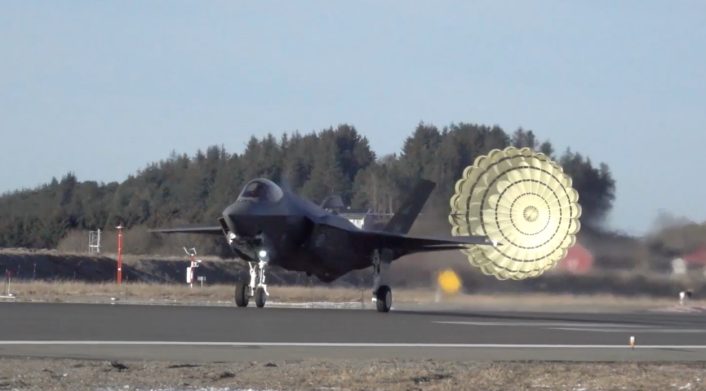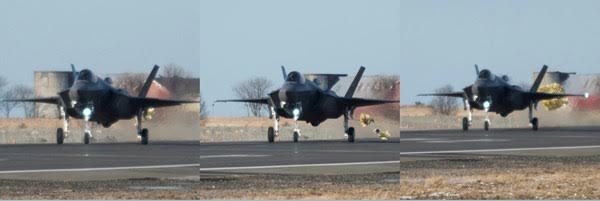The chute, housed under a small fairing on the upper rear fuselage between the vertical tails, is unique to the Norwegian aircraft.
On Feb. 16, the Royal Norwegian Air Force completed a successful verification of the F-35A drag chute system at Ørland Air Force Base.
The system, housed under a small fairing on the upper rear fuselage between the vertical tails, can be used to rapidly decelerate Norwegian F-35s after landing on the country’s icy runways under windy conditions.
Although the chute is unique to the Norwegian aircraft, other nations flying the F-35A may adopt it, if needed.
Meanwhile, the U.S. Air Force is completing another round of cold-weather testing of the F-35A at Eielson Air Force Base in Alaska.

“Receiving the first three aircraft in November 2017 was a major milestone for Norway. The program delivers on all key criteria: Time, cost and performance. Through the verification of the production version of the drag chute on our production model of the F-35, the weapons system is expected to fully qualify for arctic conditions this spring,” says Major General Morten Klever, Program Director for the F-35 program in Norway’s Ministry of Defence.
The first three RoNAF F-35s have landed in Norway in November 2017. According to the Norwegian MoD, from 2018, Norway will receive six aircraft annually up until, and including, 2024.
Norway plans to procure up to 52 F-35A to replace its fleet of ageing F-16s, that will be replaced in 2021. The first two aircraft were delivered in 2015 followed by another two in 2016 and three more ones earlier in 2017, but these aircraft were based at Luke Air Force Base, Arizona, where they are used for Norwegian and partner country pilot training.
Top image credit: Royal Norwegian Air Force








